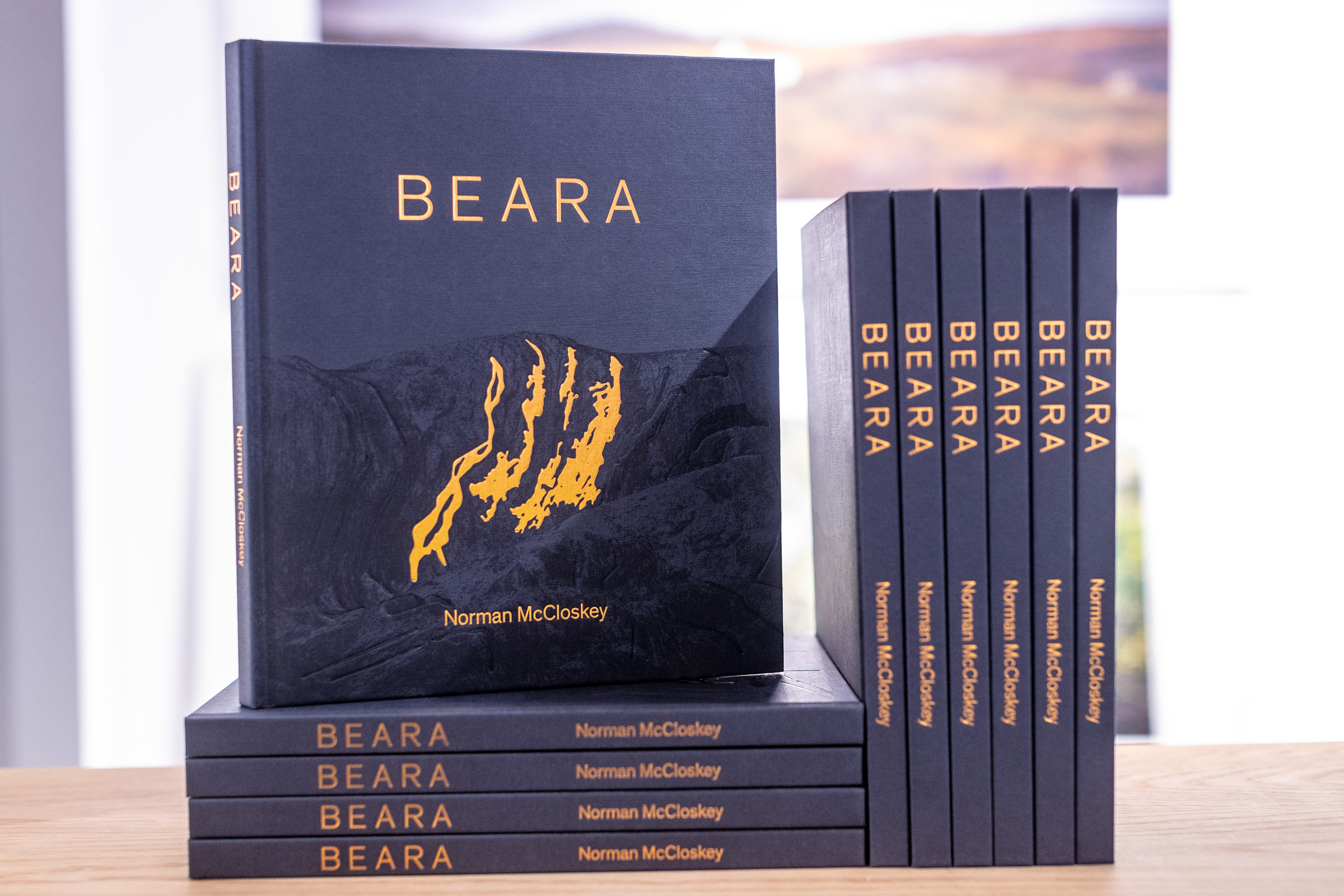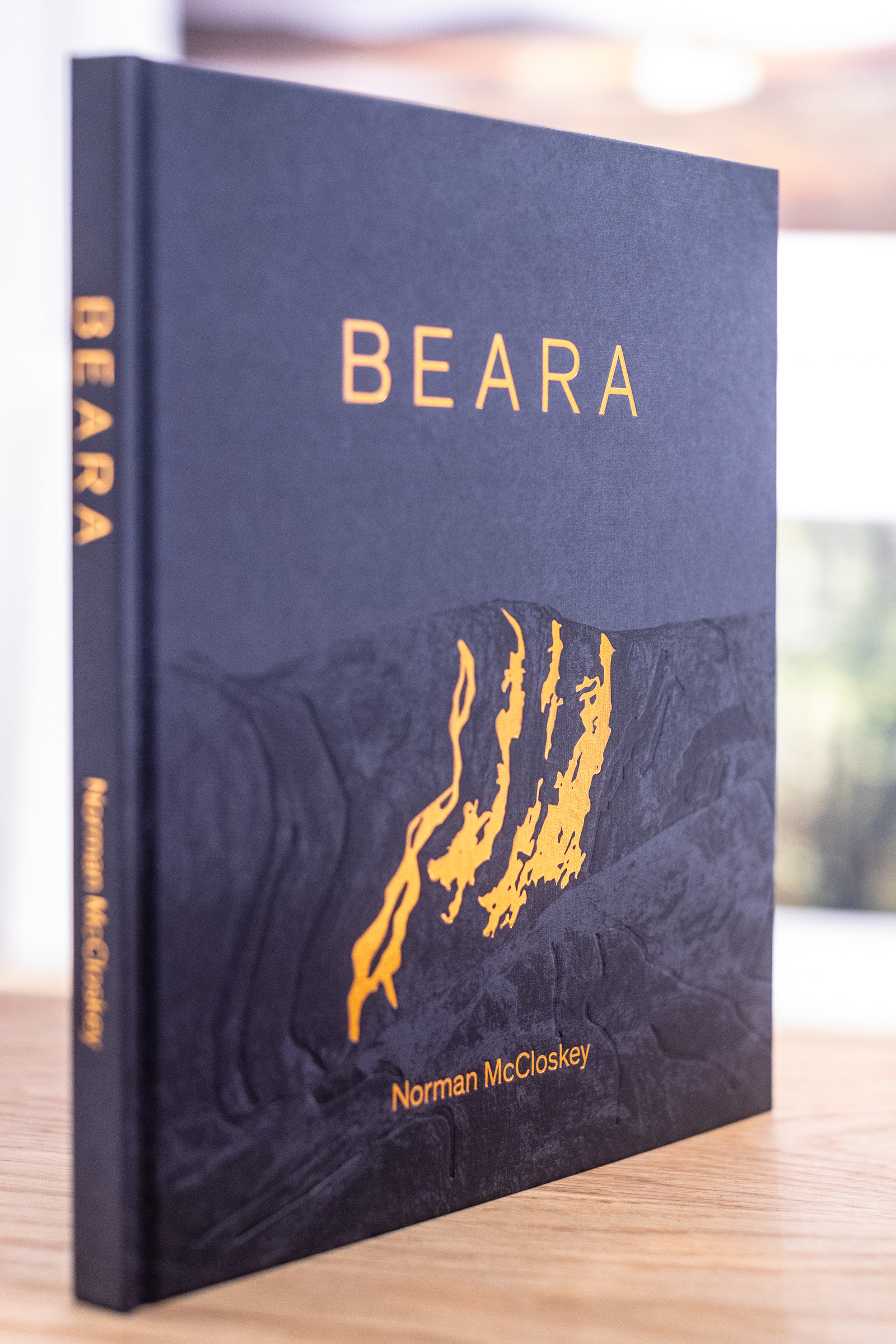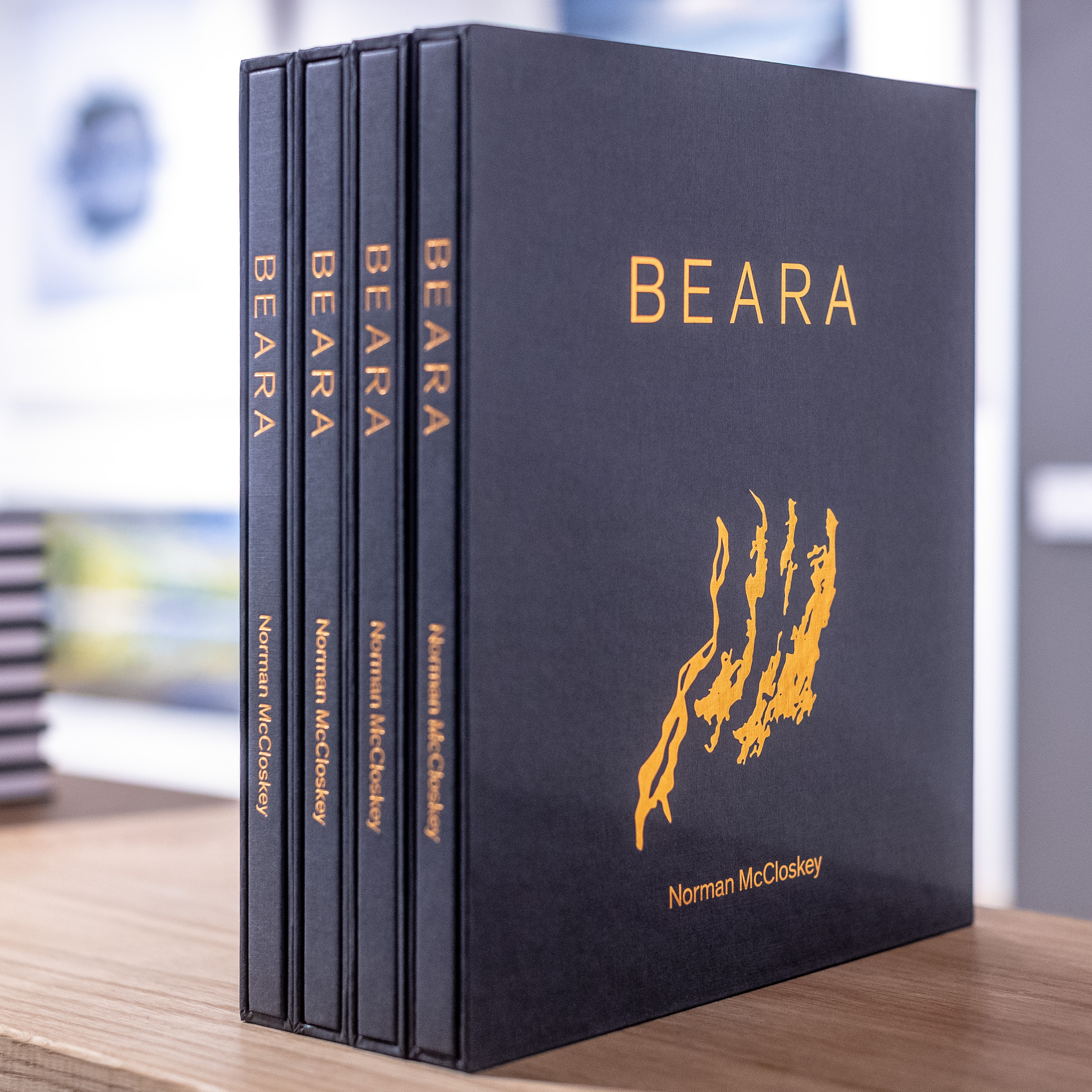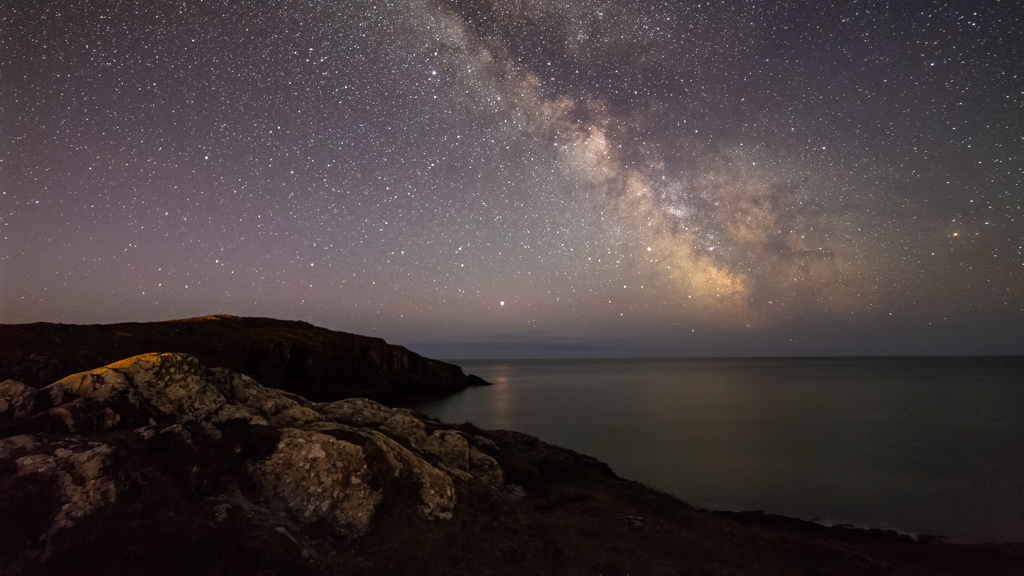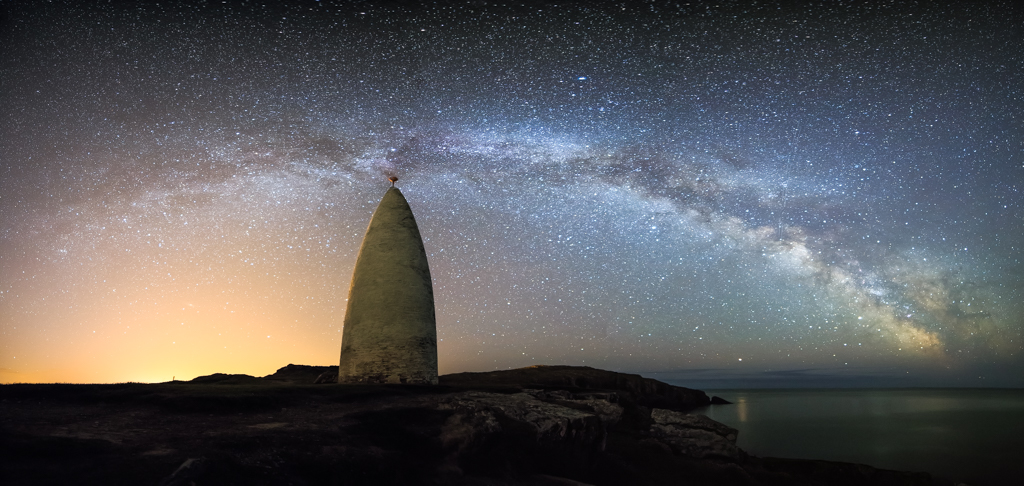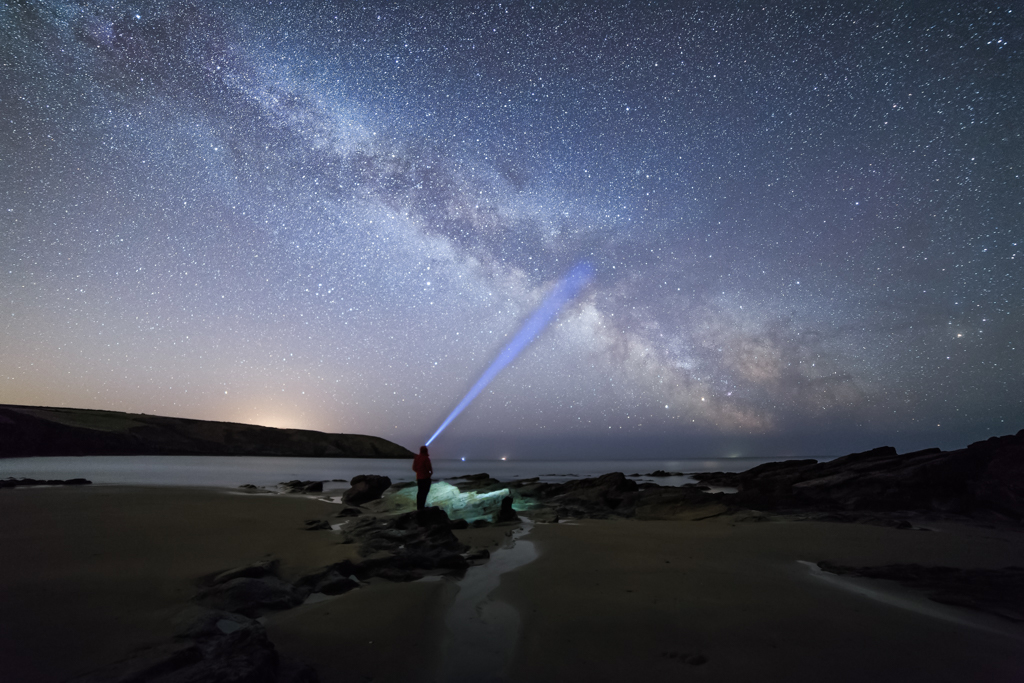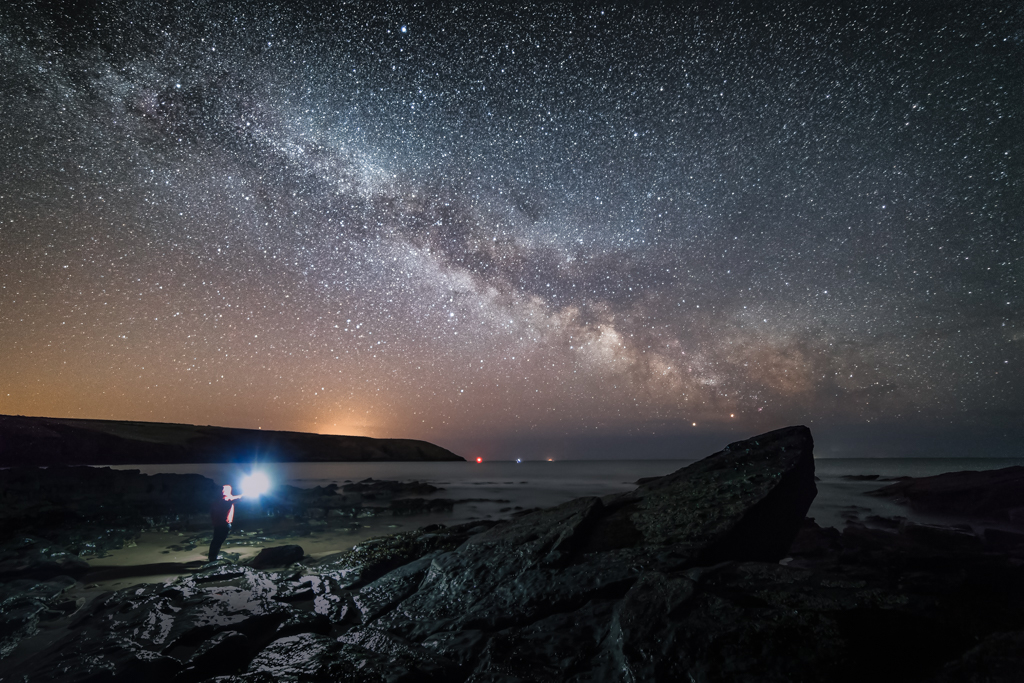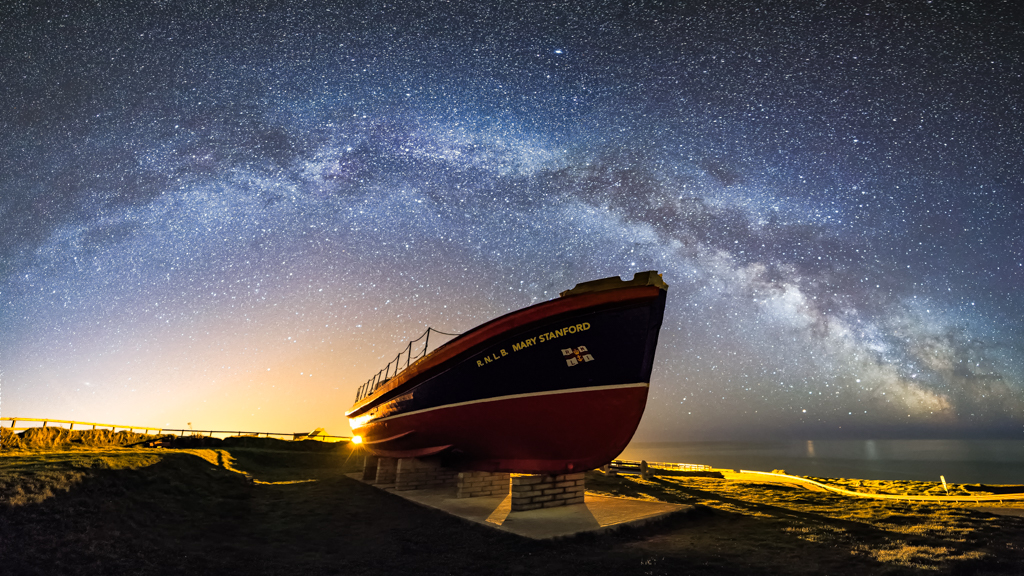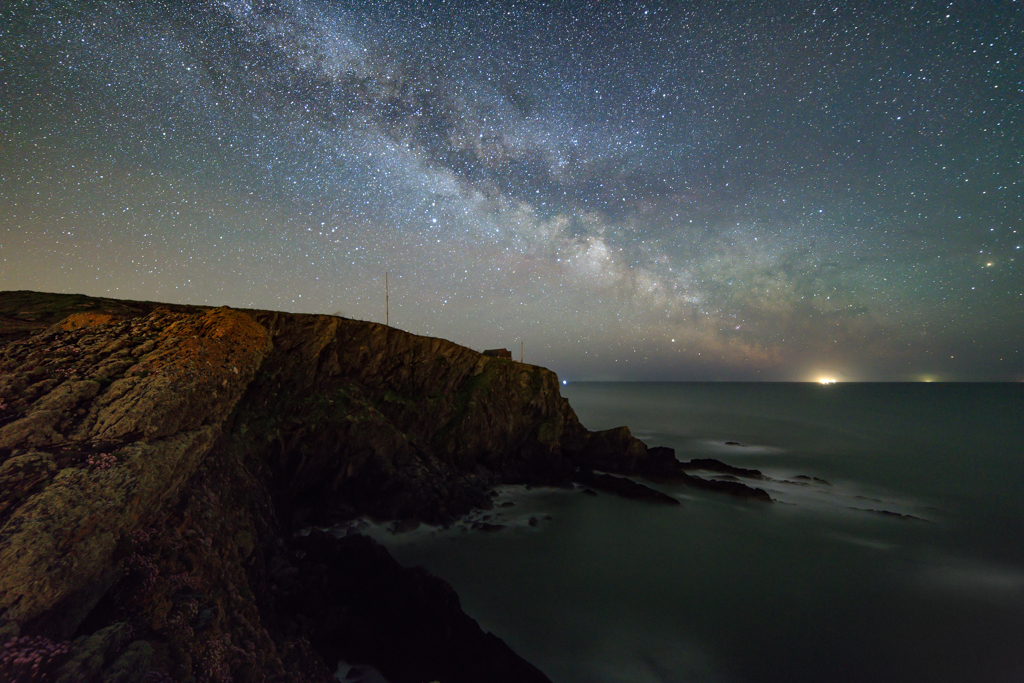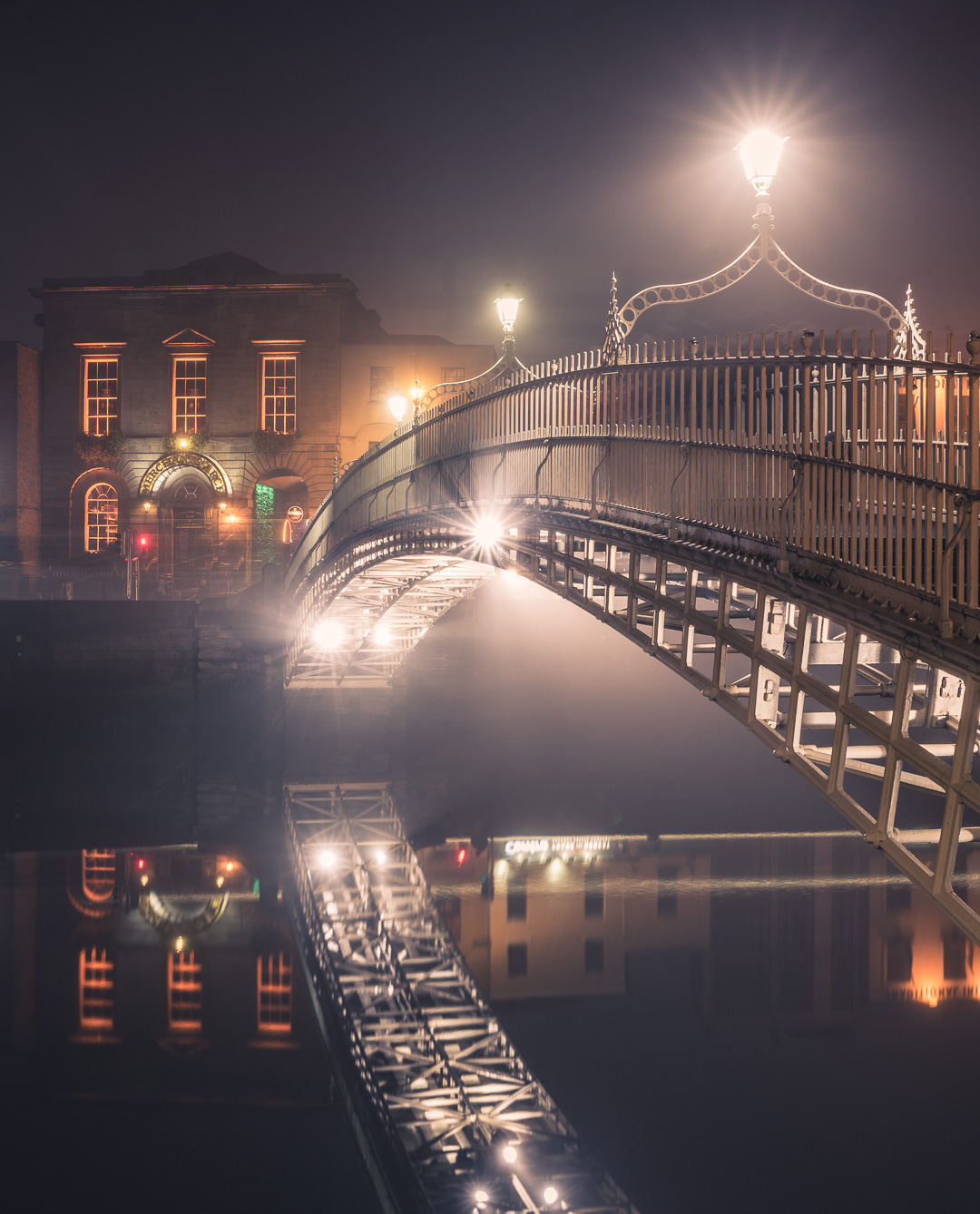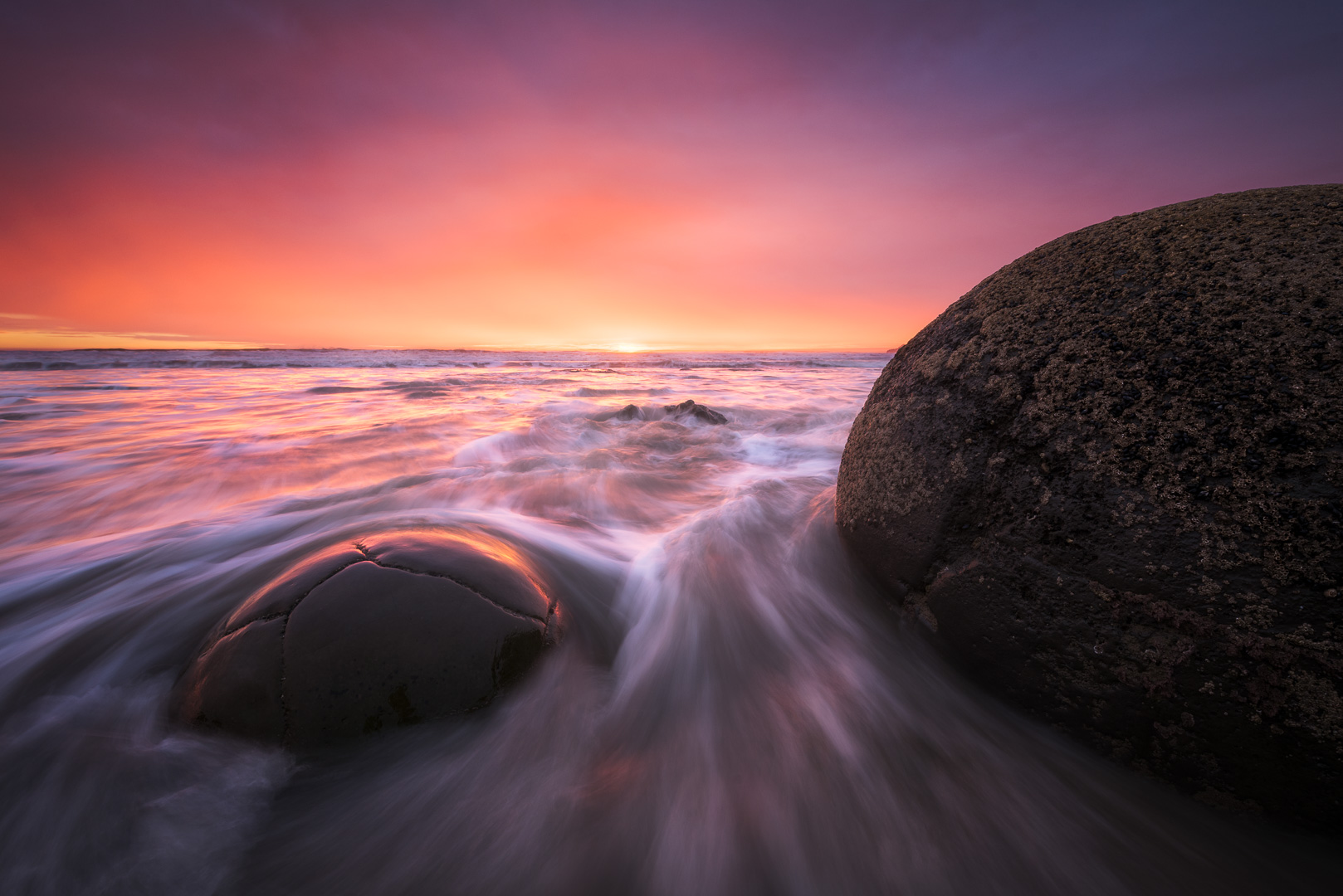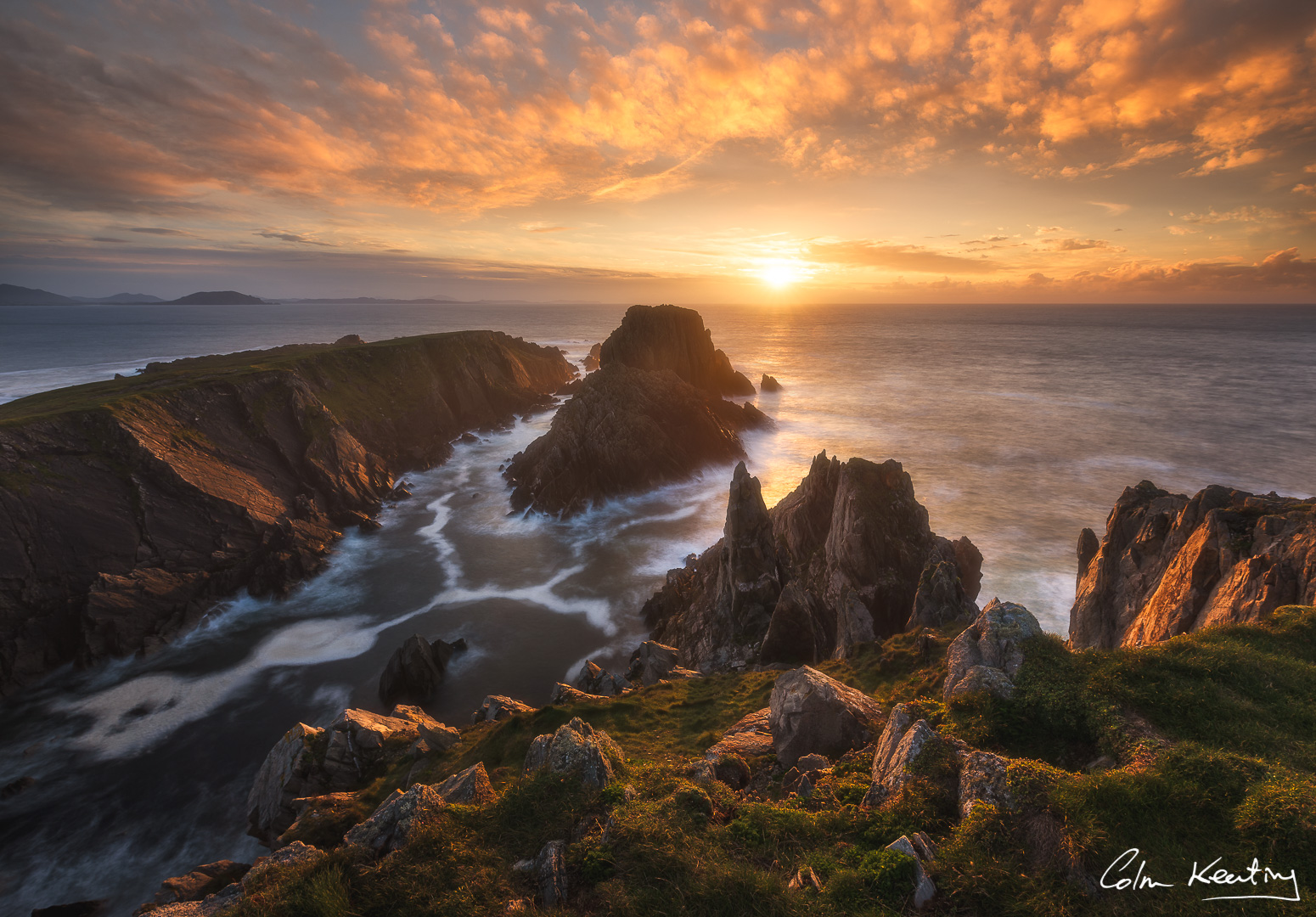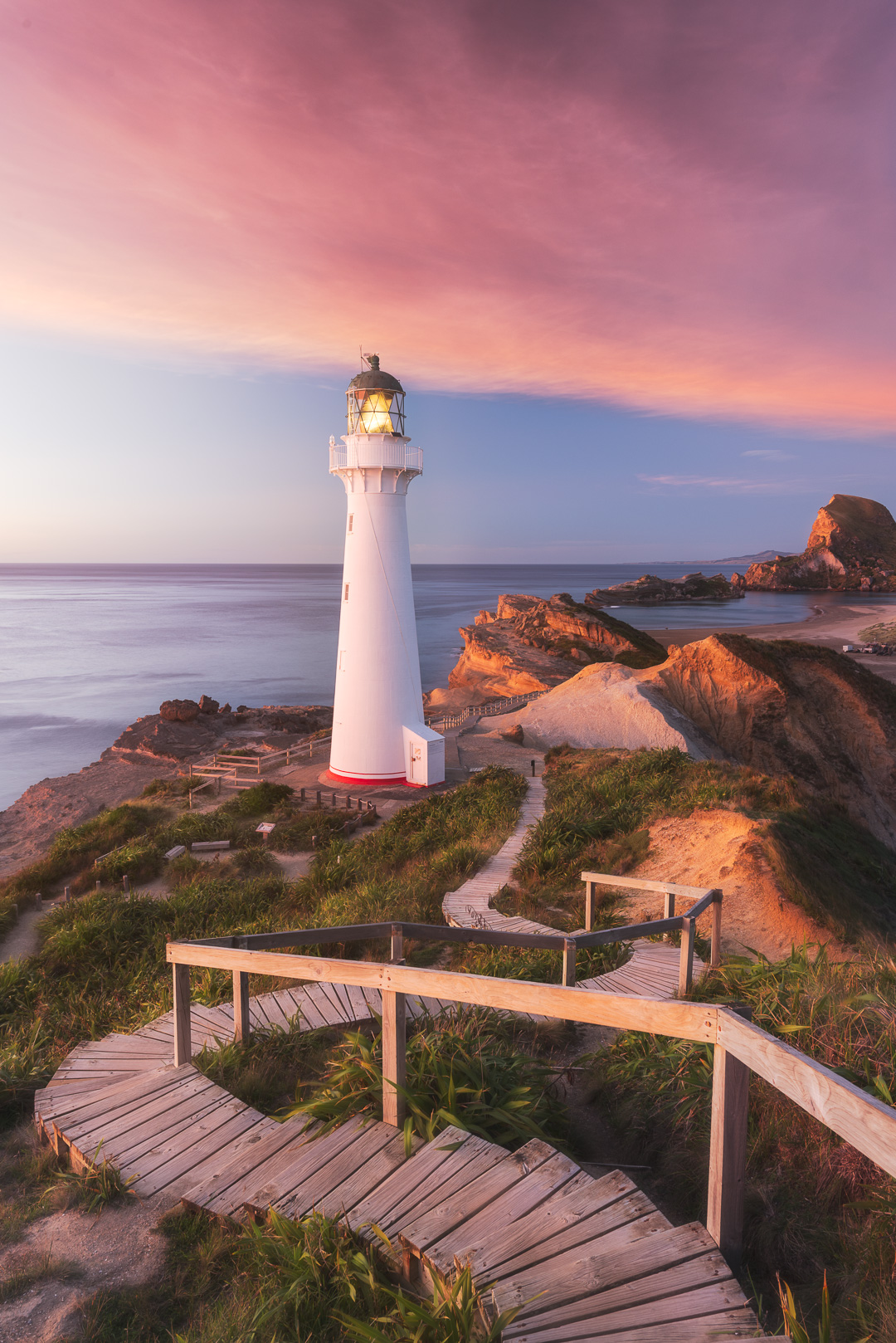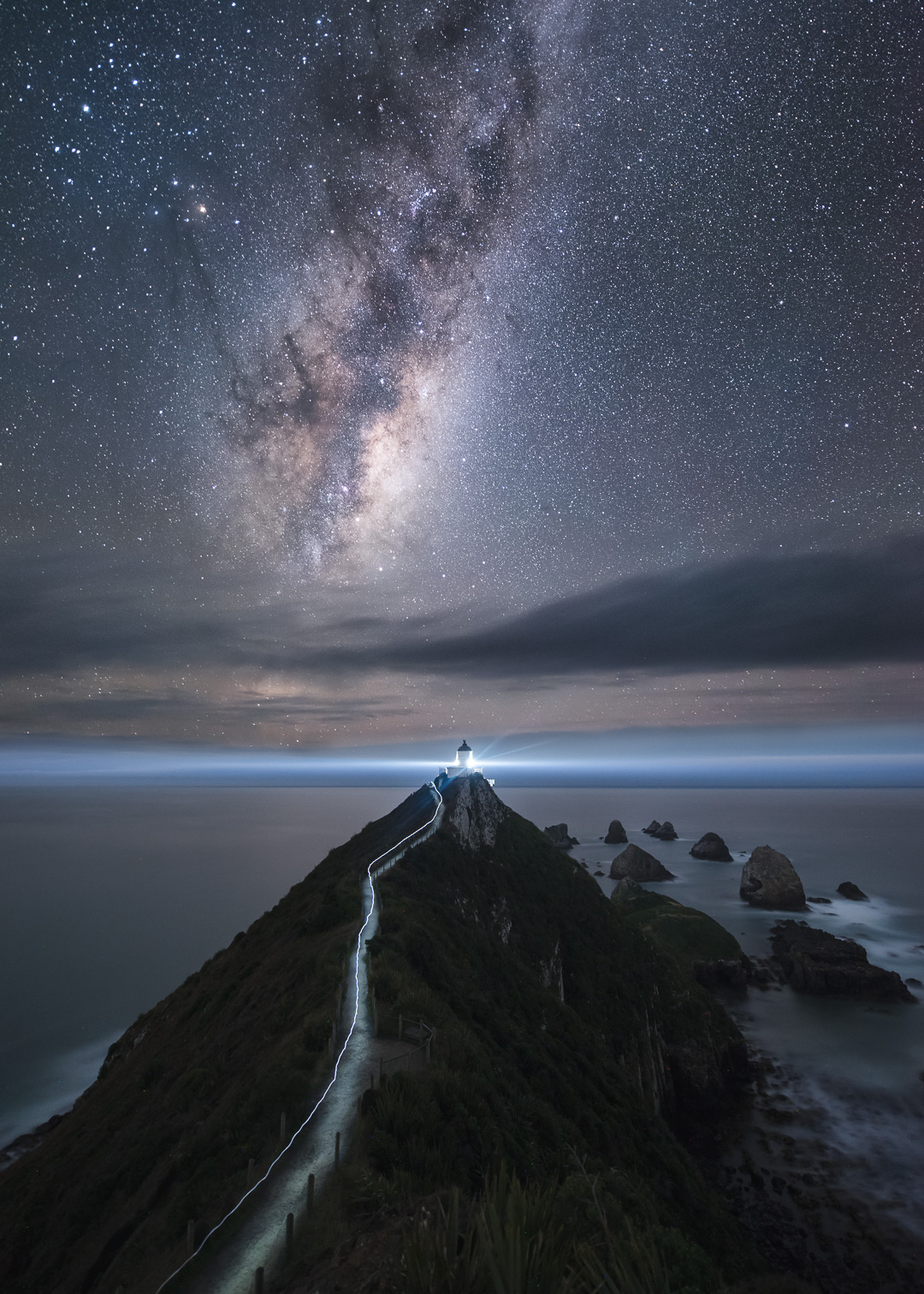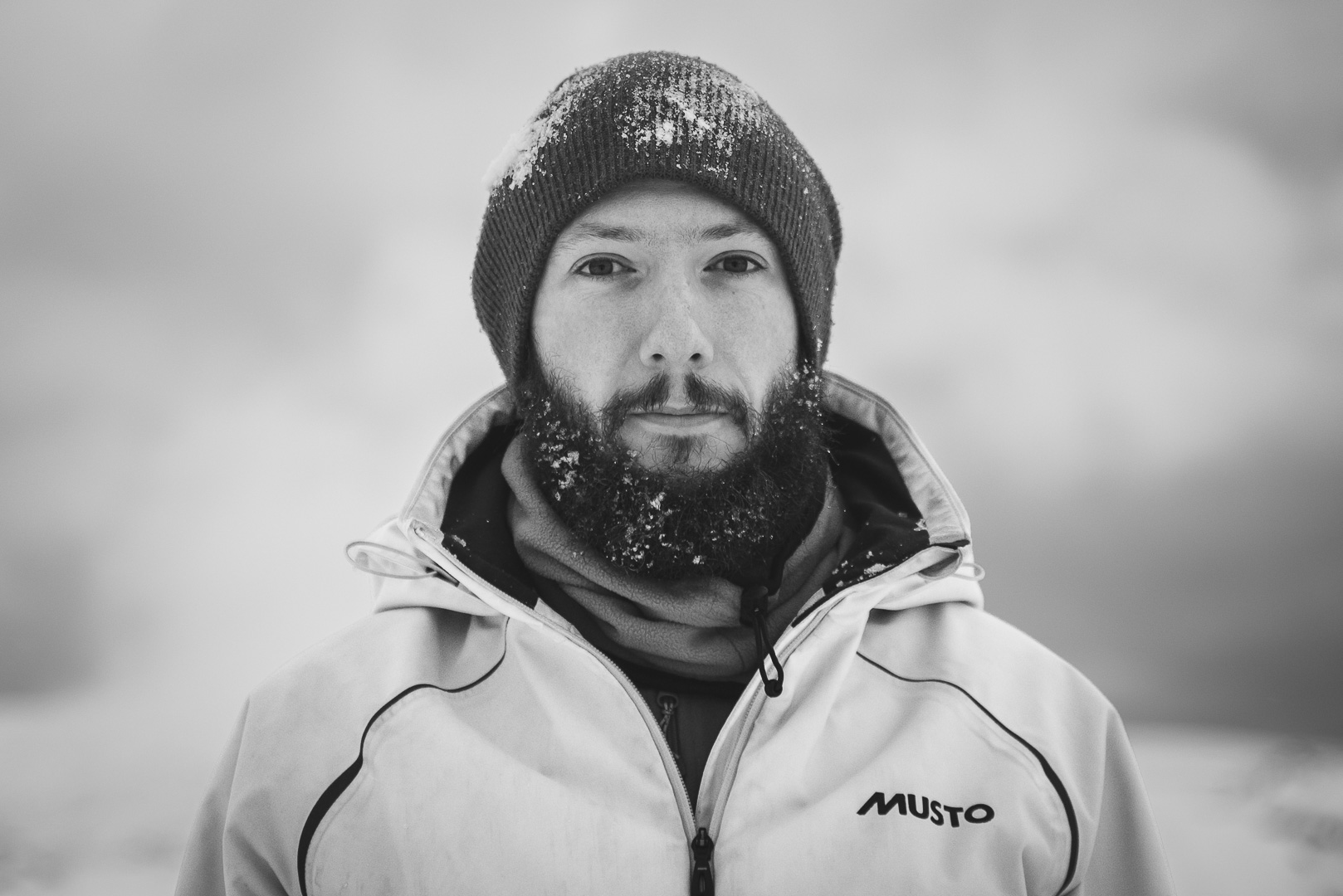Welcome to my new series of articles here on Sleeklens simply titled “Book Reviews”. In these articles, I review and discuss various photography books that I encounter and look through. First up on my list is BEARA. This book features a stunning collection of landscape imagery by Irish Photographer Norman McCloskey. Read on to get my thoughts and opinions about this photography book.
BEARA – First Impressions
The old adage “First Impressions Are Lasting Impressions” may be a cliche but a valid and solid truth none the less. First impressions really do matter. And when it comes to making a lasting impression, BEARA lands a knockout blow. The cover is quite simply one of the best photography book covers that I have ever seen. It is simple and yet sophisticated. Clean and yet not void of substance. Bold and visually striking, yet humble and not overpowering. The plain dark grey of the cover contrasts ever so nicely with an orange coloured text. In fact, here orange represents the Copper mined in this region in times gone by. The dark grey cover delicately embellishes the landscape which also features this same orange/copper colour. The cover really shines and invites you to the exquisite landscape imagery found within.
BEARA – Looking Inside The Book
Once you slowly go past the exciting cover and proceed to enter the book, an enchanting Irish landscape awaits. The content of this book focuses on a particular section of Ireland in the south west. The location in question is of course the Beara Peninsula. One of several peninsulas located in the south west in counties Cork and Kerry. The Beara peninsula is certainly less traveled when compared to the Dingle Peninsula. Looking for a good coffee shop down within the Beara Peninsula will be a tough ask. However, the isolation is part of the appeal of the Beara Peninsula. You really get a sense of connecting back with nature down there!
Regarding the the layout of the book, beyond the cover greets you with a nice sketching of the Beara Peninsula. Across the page, a foreword from Irish Film Director Neil Jordan. Next, you will find an introduction to the book from the author Norman McCloskey. And at the end of the book, you will find thumbnails of each image along with the EXIF data for those images. Now, it is between the opening and closing pages where the real magic lies.
The images presented throughout Beara are a mixture of wide open vistas and more close up/detail style shots. Norman must have had a difficult time going through the editing process and selecting which images were included or excluded from the final version. Nevertheless, Norman did a great a job of varying the types of images on display. It is hard to pick a favorite image, although I am sure every reader will have their own favorite!
BEARA – A Word With The Author
When I called down to Norman’s Gallery located in Kenmare, County Kerry in the south west of Ireland, I asked him some questions concerning his latest book project. The first question on my mind was “How long did it take to create the book, from conceptualization to publishing?“. Norman’s answer; In total about two and a half years. With two years photographing two or three times a week. It was a tight turn around, and I very nearly considered extending the project for another year. But sometimes you have to just press the button and say it’s finished!
Next question was “What attracted you to the concept of the book?“. Norman answered; Beara has been my main source of inspiration from the very first time I picked up a camera and took my first landscape images. It’s a magical place to work, with great variance in light throughout the year. Lots of challenges and different terrain and no one had done a book like this on this part of Ireland before.
As I also have Norman’s first book PARKLIGHT, I wanted to ask him “In what ways was this book project different from the “PARKLIGHT” project?“. Norman’s reply; It was conceived as a far more personal project and I think you can see that in the result. PARKLIGHT had a ready made list of go to spots and must have images as it was so well known. The focus of the book was the very defined Killarney National Park. And so there were scenes and views that people would expect. I had a blank canvas with BEARA and chose to work in a more personal style, exploring details, form and texture and trying to avoid cliched well known views where possible.
Lastly, I wanted to throw a final question to Norman and that was “Any ideas for your next book project?“. Norman enthusiastically responded with; Yes ! I have two definite book projects in the pipeline. One is already started and the other a huge project that I would need a lot of time and resources for. I’m currently editing a commissioned book on Donegal as well as working on a project on offshore islands which also has lots of potential.
BEARA – My thoughts?
Beara really is a visual delight for a Landscape Photographer such as myself. As a photographer who is native to the south of Ireland, the images contained within certainly inspires me to grab my bags, hop into my Landrover and drive the two and half hour drive down to the Beara Peninsula! As stated at the start of the article, I was really impressed by the cover of the book. It is just so beautiful. But I was equally as impressed with the print quality of the images within the book. The 170 gsm paper certainly helps with that aspect.
Because the default image aspect ratio on modern APS-C and Full Frame DSLRs is that of 3×2, a lot of the images that you will see on Facebook feeds are the default 3×2. Not that there is anything wrong with that! However, it was great to see Norman utilizing different aspect ratios such as 1×1 (square crop). I personally find 1×1 aspect ratio images to be very appealing. However, one needs to be careful about composition. While the Rule of Thirds lends itself nicely to the default 3×2 aspect ratio, I find 1×1 images of better-suit compositions containing more symmetry. And that certainly comes across in a lot of Norman’s images. Thoughtful compositions and no sense or rushing when capturing the image.
BEARA – Where can you get yourself a copy?
The best place is probably directly on Norman’s website https://www.normanmccloskey.com/books/beara/. It is high quality 120 page hardback featuring 90 images that comes in two editions. It would really make a great addition to any book shelf or coffee table.
